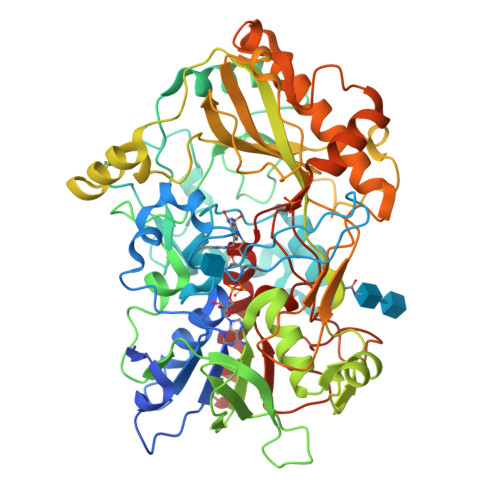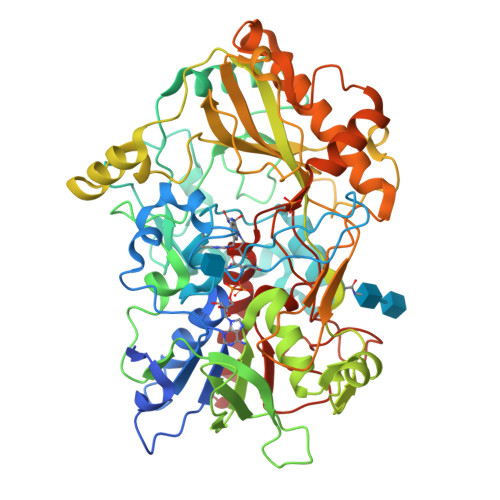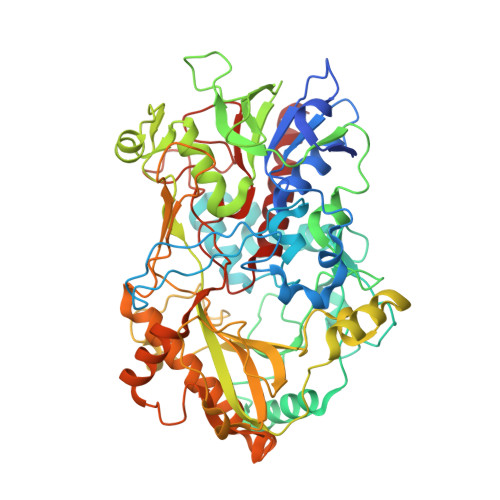The 1.6 A crystal structure of pyranose dehydrogenase from Agaricus meleagris rationalizes substrate specificity and reveals a flavin intermediate.
Tan, T.C., Spadiut, O., Wongnate, T., Sucharitakul, J., Krondorfer, I., Sygmund, C., Haltrich, D., Chaiyen, P., Peterbauer, C.K., Divne, C.(2013) PLoS One 8: e53567-e53567
- PubMed: 23326459
- DOI: https://doi.org/10.1371/journal.pone.0053567
- Primary Citation of Related Structures:
4H7U - PubMed Abstract:
Pyranose dehydrogenases (PDHs) are extracellular flavin-dependent oxidoreductases secreted by litter-decomposing fungi with a role in natural recycling of plant matter. All major monosaccharides in lignocellulose are oxidized by PDH at comparable yields and efficiencies. Oxidation takes place as single-oxidation or sequential double-oxidation reactions of the carbohydrates, resulting in sugar derivatives oxidized primarily at C2, C3 or C2/3 with the concomitant reduction of the flavin. A suitable electron acceptor then reoxidizes the reduced flavin. Whereas oxygen is a poor electron acceptor for PDH, several alternative acceptors, e.g., quinone compounds, naturally present during lignocellulose degradation, can be used. We have determined the 1.6-Å crystal structure of PDH from Agaricus meleagris. Interestingly, the flavin ring in PDH is modified by a covalent mono- or di-atomic species at the C(4a) position. Under normal conditions, PDH is not oxidized by oxygen; however, the related enzyme pyranose 2-oxidase (P2O) activates oxygen by a mechanism that proceeds via a covalent flavin C(4a)-hydroperoxide intermediate. Although the flavin C(4a) adduct is common in monooxygenases, it is unusual for flavoprotein oxidases, and it has been proposed that formation of the intermediate would be unfavorable in these oxidases. Thus, the flavin adduct in PDH not only shows that the adduct can be favorably accommodated in the active site, but also provides important details regarding the structural, spatial and physicochemical requirements for formation of this flavin intermediate in related oxidases. Extensive in silico modeling of carbohydrates in the PDH active site allowed us to rationalize the previously reported patterns of substrate specificity and regioselectivity. To evaluate the regioselectivity of D-glucose oxidation, reduction experiments were performed using fluorinated glucose. PDH was rapidly reduced by 3-fluorinated glucose, which has the C2 position accessible for oxidation, whereas 2-fluorinated glucose performed poorly (C3 accessible), indicating that the glucose C2 position is the primary site of attack.
Organizational Affiliation:
School of Biotechnology, KTH Royal Institute of Technology, Stockholm, Sweden.




















